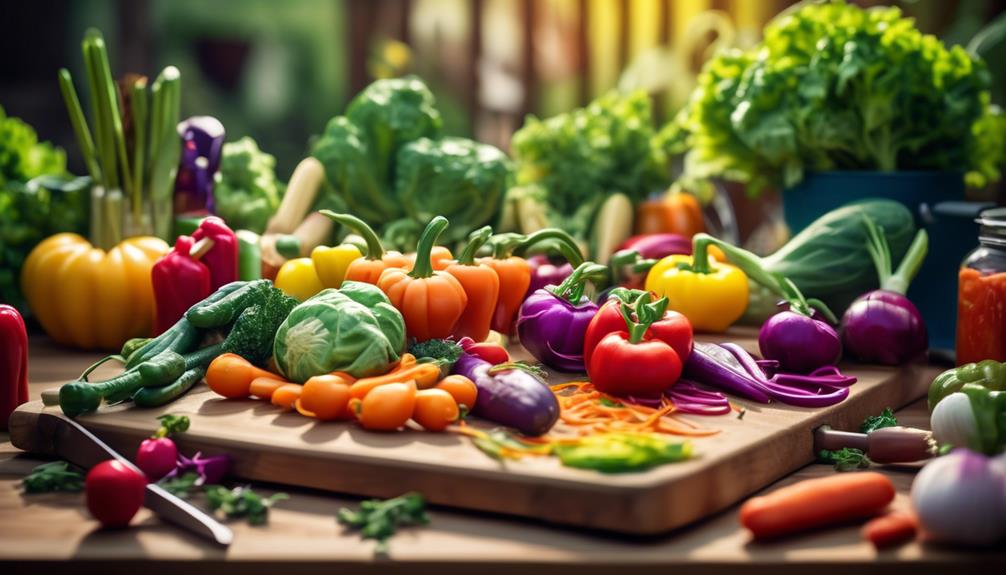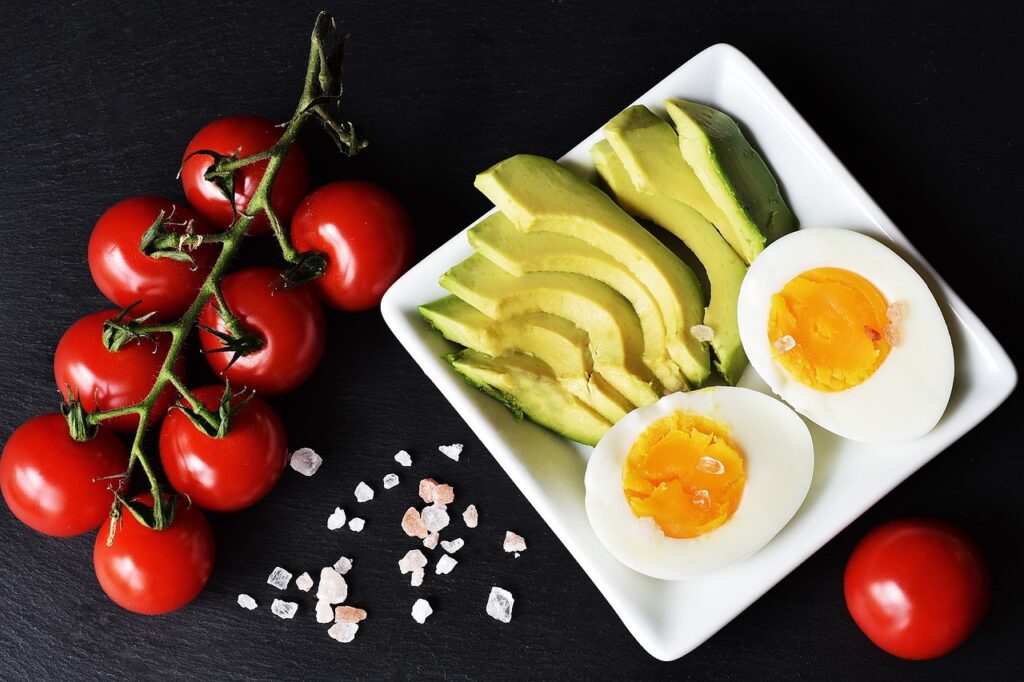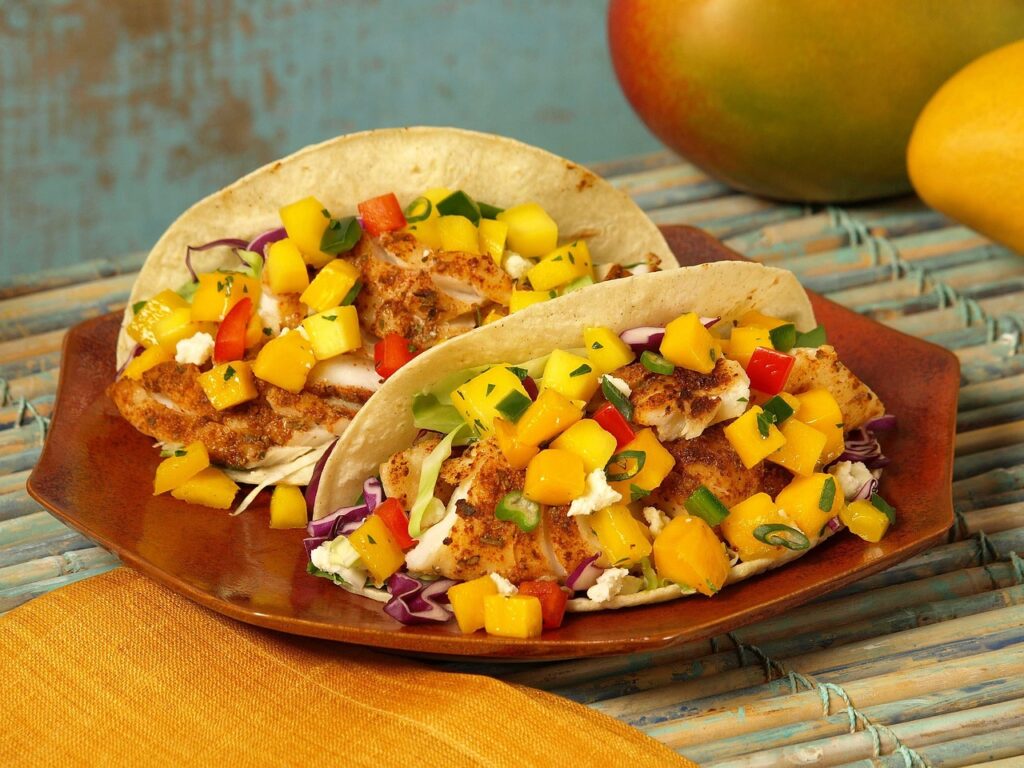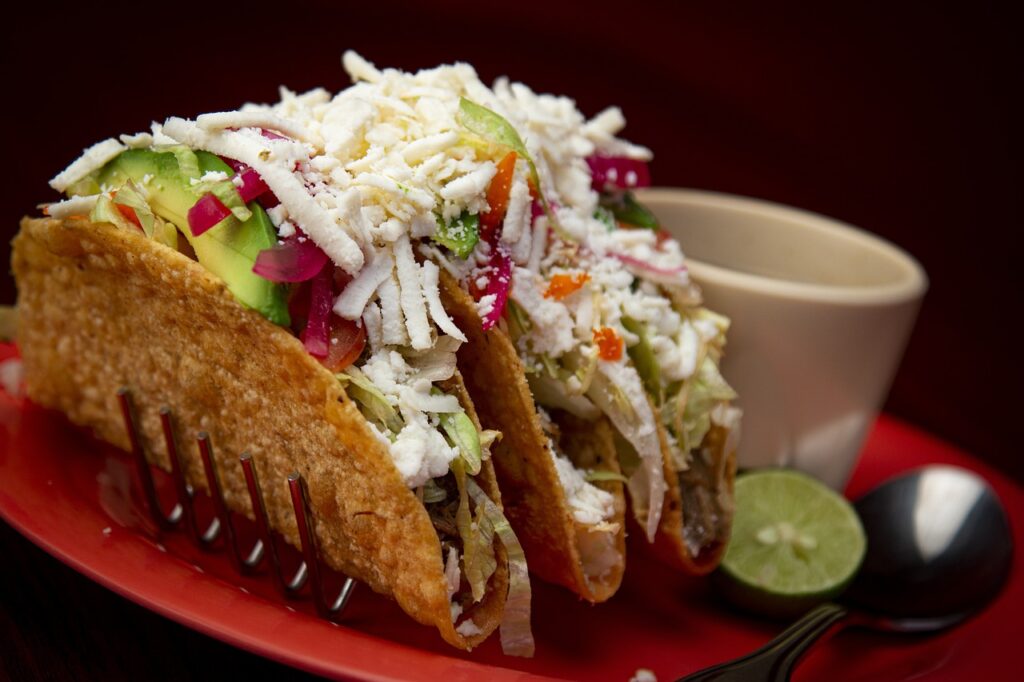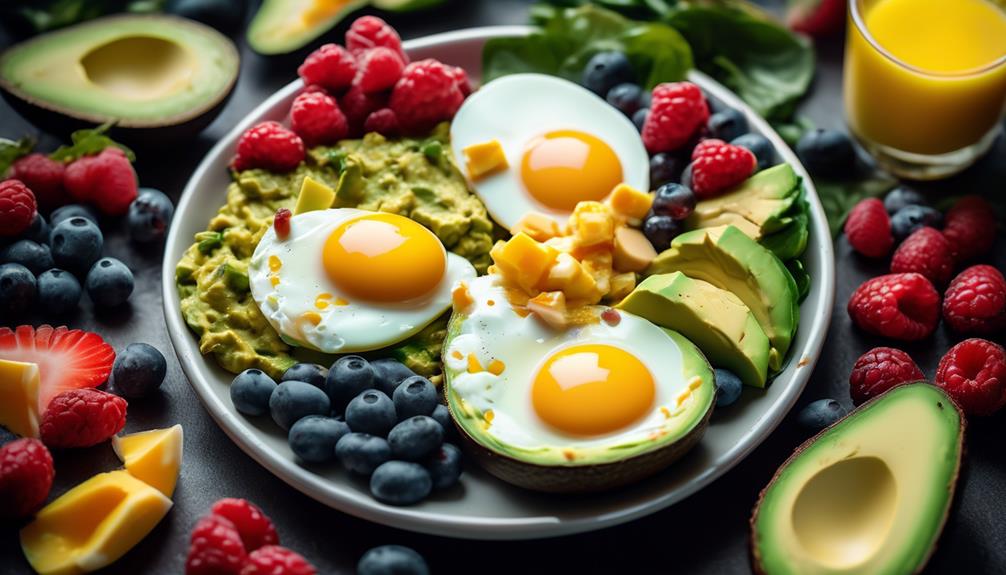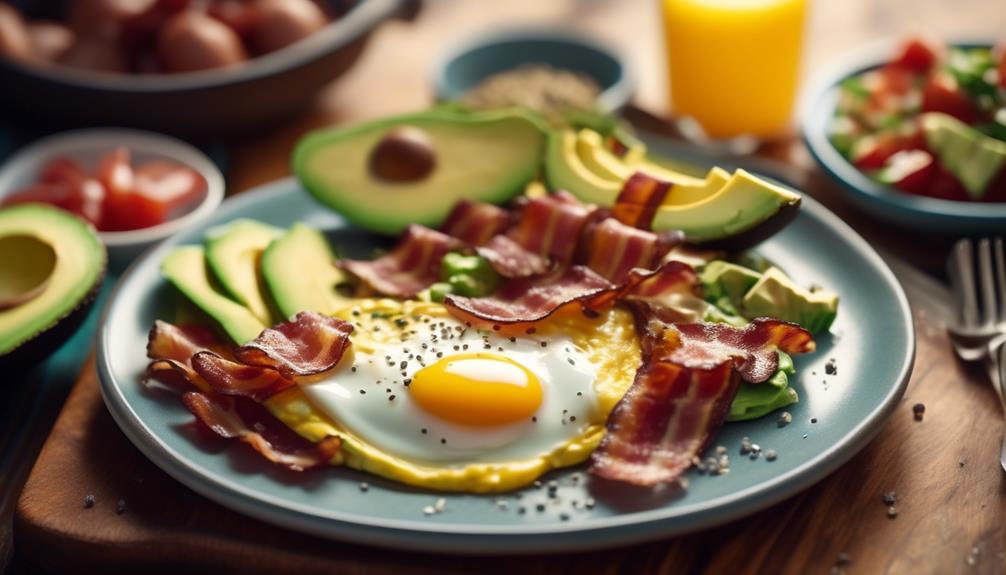Did you know that nearly 40% of adults in the United States are actively trying to reduce or eliminate carbohydrates from their diet?
If you're one of them, you might be wondering how to still enjoy delicious meals while sticking to your low-carb goals. Well, you're in luck!
In this article, we will explore seven clever ways to prepare low-carb veggie delights that are not only healthy but also bursting with flavor. From zucchini noodles to cauliflower rice, there's a variety of options to satisfy your taste buds without compromising your dietary needs.
So, get ready to discover some mouthwatering recipes that will make you forget you're even on a low-carb diet.
Zucchini Noodles: The Perfect Low-Carb Pasta Alternative
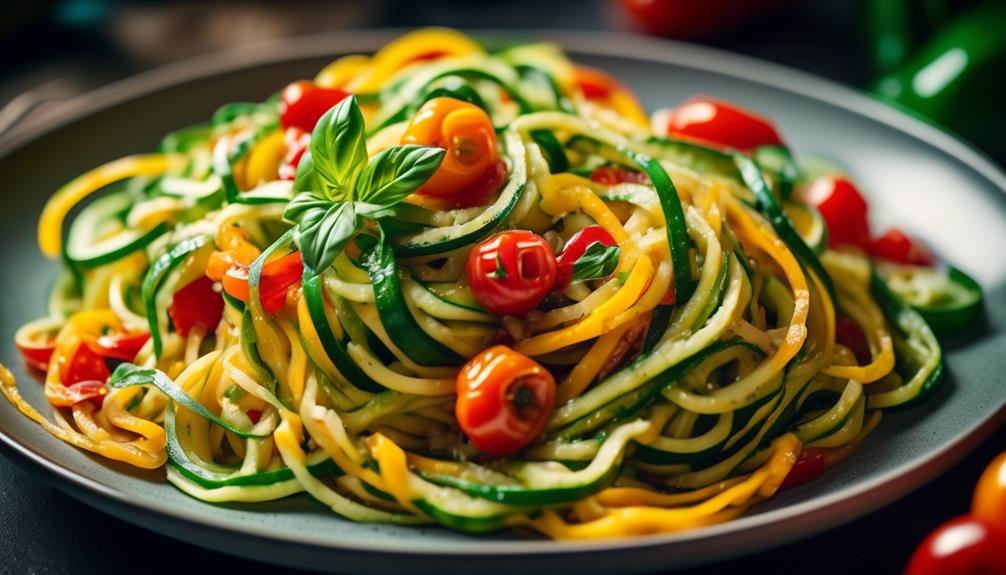
If you're looking for a low-carb pasta alternative, zucchini noodles are the perfect choice. Not only are they delicious, but they also offer a range of health benefits.
Zucchini noodles, or 'zoodles,' are made from spiralized zucchini, creating long, thin strands that resemble traditional pasta. They're incredibly versatile and can be used in a variety of zucchini noodle recipes.
One of the main benefits of zucchini noodles is their low carbohydrate content. Compared to regular pasta, zoodles contain significantly fewer carbs, making them an excellent option for those following a low-carb or ketogenic diet. They're also naturally gluten-free, making them suitable for individuals with gluten sensitivities or celiac disease.
Another advantage of zucchini noodles is their high water content. Zucchini is made up of approximately 95% water, which means that zoodles are incredibly hydrating. This can help you feel fuller for longer and may aid in weight management.
Zucchini noodles are also packed with essential nutrients. They're a good source of vitamin C, vitamin A, potassium, and antioxidants. These nutrients support overall health and can boost your immune system.
Incorporating zucchini noodles into your diet is easy. You can enjoy them raw in salads or use them as a substitute for pasta in your favorite recipes. From zucchini noodle stir-fry to zoodle spaghetti, the possibilities are endless.
Cauliflower Rice: A Versatile Low-Carb Grain Substitute
Looking to reduce your carb intake without sacrificing taste and variety? Cauliflower rice is a versatile low-carb grain substitute that offers numerous nutritional benefits.
Packed with vitamins and minerals, cauliflower rice is a great source of dietary fiber and antioxidants.
Whether you're looking to make a flavorful stir-fry, a satisfying risotto, or a delicious sushi roll, cauliflower rice is a tasty and healthy option to incorporate into your low-carb diet.
Nutritional Benefits
Cauliflower rice is a versatile and low-carb grain substitute that offers numerous nutritional benefits. Here are some key reasons why you should consider adding cauliflower rice to your diet:
- Low in calories: Cauliflower rice is a great option if you're watching your calorie intake. It contains only about 25 calories per cup, compared to around 200 calories in a cup of cooked white rice.
- High in fiber: Fiber is essential for a healthy digestive system and can help prevent constipation. Cauliflower rice is a good source of fiber, with about 3 grams per cup.
- Packed with vitamins and minerals: Cauliflower is rich in vitamins C, K, and B6, as well as folate and potassium. These nutrients play important roles in maintaining overall health and supporting various bodily functions.
Flavorful Recipe Ideas
For a delicious and healthy twist on traditional grain-based dishes, try incorporating cauliflower rice as a versatile low-carb substitute. Cauliflower rice isn't only low in carbohydrates, but it's also packed with nutrients and fiber. It's a great option for those looking to reduce their carb intake while still enjoying flavorful salad options and creative veggie side dishes.
One way to use cauliflower rice is to make a refreshing salad. Simply mix cauliflower rice with your favorite vegetables like cucumbers, tomatoes, and bell peppers. Add some herbs like parsley or cilantro for an extra burst of flavor. You can also toss in some protein like grilled chicken or shrimp to make it a complete meal.
Another idea is to transform cauliflower rice into a flavorful side dish. Sauté it with garlic and onions for a delicious pilaf-like dish. You can also add spices like cumin, turmeric, or paprika to give it a unique and exotic taste. Serve it alongside grilled meats or fish for a satisfying and healthy meal.
Incorporating cauliflower rice into your meals not only adds variety and flavor but also helps you cut down on carbs without sacrificing taste. So, get creative and enjoy the many possibilities that cauliflower rice has to offer!
Veggie Stuffed Bell Peppers: A Colorful and Nutritious Meal
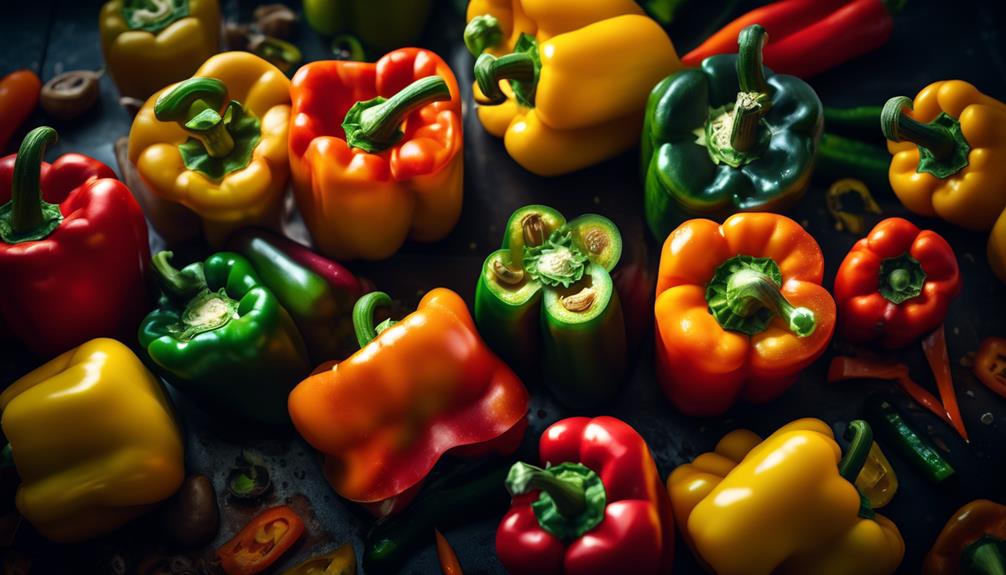
Get ready to tantalize your taste buds with flavorful veggie fillings that will make your stuffed bell peppers a hit.
Learn the baking and stuffing techniques that ensure your peppers are cooked to perfection, with a tender and delicious filling.
Don't forget to garnish your stuffed peppers with colorful toppings to create a visually appealing and nutritious meal.
Flavorful Veggie Filling
To create a flavorful veggie filling for your veggie stuffed bell peppers, enhance the taste and nutrition with a vibrant medley of fresh vegetables.
Here are three ways to make your veggie filling both flavorful and satisfying:
- Sautéed Vegetables: Start by sautéing a mix of onions, garlic, and your favorite veggies like zucchini, mushrooms, and spinach. This will add depth and richness to your filling.
- Herbs and Spices: Don't be afraid to experiment with different herbs and spices to amp up the flavor. Try adding basil, oregano, paprika, or cumin for an extra kick.
- Cheese and Nuts: For a creamy and nutty element, mix in some grated cheese like feta or Parmesan, and sprinkle in some chopped nuts like almonds or walnuts. This will add texture and a burst of flavor to your veggie filling.
Baking and Stuffing Techniques
To achieve a perfectly baked and deliciously stuffed bell pepper meal, employ these effective baking and stuffing techniques.
When it comes to baking the bell peppers, preheating the oven to 375°F (190°C) and placing the stuffed peppers on a baking sheet lined with parchment paper will ensure even cooking. For a softer pepper, cover the dish with foil during the first part of baking.
Stuffing variations are endless, but some popular options include quinoa and black bean, ground turkey and spinach, or cauliflower rice and feta cheese. To enhance the flavors, consider adding herbs and spices such as garlic, cumin, or paprika. To keep the stuffing moist, you can mix in a sauce or salsa.
Be sure to fill the peppers generously and bake for 25-30 minutes until the peppers are tender and the filling is cooked through.
Garnishing for Visual Appeal
To add an eye-catching finishing touch to your veggie stuffed bell peppers, consider garnishing them for visual appeal while still maintaining their colorful and nutritious qualities. Here are three garnishing techniques that will elevate the plating presentation of your dish:
- Herb Sprinkle: After stuffing the bell peppers with your delicious vegetable mixture, sprinkle a generous amount of freshly chopped herbs such as parsley or basil on top. The vibrant green color will complement the brightly colored bell peppers and add a pop of freshness to the overall presentation.
- Cheese Shavings: For an indulgent twist, shave some Parmesan or cheddar cheese on top of the stuffed bell peppers. The creamy texture and rich flavor of the cheese will enhance the taste and appearance of the dish.
- Colorful Vegetable Ribbons: Use a vegetable peeler to create thin ribbons from colorful vegetables like carrots, zucchini, or beetroot. Arrange these ribbons on top of the bell peppers in an artistic manner, adding an extra layer of visual interest and texture.
Spiralized Veggie Stir-Fry: A Quick and Healthy Weeknight Dinner
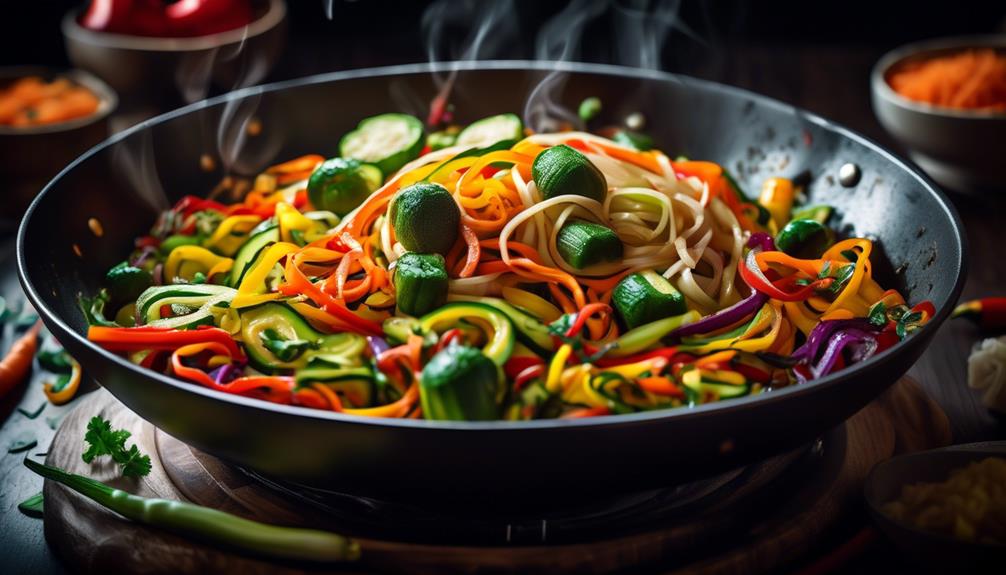
For a quick and healthy weeknight dinner, consider trying a spiralized veggie stir-fry. This dish combines the freshness of spiralized vegetables with the flavors of an Asian-inspired stir fry. Spiralizing vegetables adds a fun twist to traditional salads and stir-fries, and it's a great way to incorporate more veggies into your diet.
To make a spiralized veggie stir-fry, start by choosing your favorite vegetables. Zucchini, carrots, and bell peppers work well for this dish. Use a spiralizer to turn these vegetables into long, noodle-like strands. This not only adds visual appeal but also allows the flavors to blend together more easily.
Next, heat a small amount of oil in a skillet over medium heat. Add garlic and ginger for an extra kick of flavor. Then, toss in your spiralized veggies and stir-fry them for a few minutes until they're crisp-tender. To enhance the taste, you can add soy sauce, sesame oil, or your favorite Asian-inspired sauces.
Serve the spiralized veggie stir-fry as a main dish or as a side to accompany your favorite protein. It's a quick, healthy, and delicious option for a satisfying weeknight meal.
Portobello Mushroom Burger: A Meaty Low-Carb Alternative
If you're looking for a meaty low-carb alternative to the spiralized veggie stir-fry, consider trying a Portobello mushroom burger. These burgers aren't only delicious but also provide a satisfying and filling meal without the need for meat.
Here are three reasons why Portobello mushroom burgers are a great choice for meaty vegetarian options:
- Meaty texture: Portobello mushrooms have a firm and meaty texture that makes them a popular choice for burgers. When cooked properly, they can mimic the texture of beef patties, satisfying your craving for something substantial.
- Versatile cooking methods: Portobello mushrooms can be cooked in various ways, but grilling and roasting are the most popular methods for making burgers. Grilling gives the mushrooms a smoky flavor and charred edges, while roasting intensifies their natural flavors and creates a tender texture.
- Low-carb option: Portobello mushrooms are low in carbohydrates, making them an excellent choice for those following a low-carb diet. They're also rich in vitamins, minerals, and antioxidants, making them a nutritious choice for a meaty vegetarian meal.
Broccoli and Cheese Stuffed Zucchini Boats: A Cheesy Low-Carb Delight
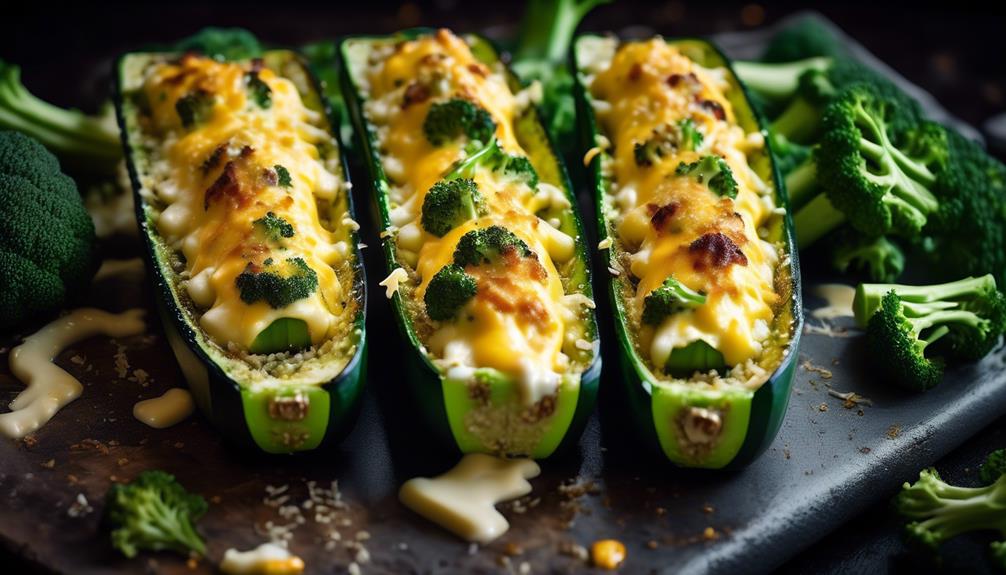
Don't miss out on the cheesy goodness of Broccoli and Cheese Stuffed Zucchini Boats, a delicious and low-carb delight. These cheesy zucchini boats are the perfect way to enjoy a satisfying meal without the guilt of high carbs. Packed with the goodness of broccoli and the creamy richness of cheese, they're sure to become a household favorite.
To make these low carb broccoli delights, start by preheating your oven to 375°F (190°C). Cut zucchini in half lengthwise and scoop out the seeds, creating a hollow boat-like shape. Steam or blanch broccoli florets until tender, then chop them into small pieces. Mix the broccoli with grated cheese, such as cheddar or mozzarella, and season with salt and pepper to taste. Fill each zucchini boat with the broccoli-cheese mixture, then place them on a baking sheet.
Bake in the preheated oven for about 20-25 minutes, or until the zucchini is tender and the cheese is melted and bubbly. The result is a cheesy, low-carb delight that will satisfy your cravings while keeping your carb intake in check.
Serve these zucchini boats as a side dish or even as a main course, and enjoy the delicious combination of flavors and textures.
Veggie Packed Omelette: A Protein-Packed Low-Carb Breakfast Option
Start your day off right with a protein-packed low-carb breakfast option – a veggie packed omelette that will keep you satisfied and energized. Omelettes aren't only delicious but also a great way to incorporate vegetables into your morning routine.
Here are three reasons why a veggie packed omelette is the perfect protein-packed low-carb breakfast option:
- High in Protein: Eggs are a fantastic source of protein, providing all the essential amino acids your body needs. By adding veggies such as spinach, mushrooms, and bell peppers to your omelette, you increase the protein content even more. Protein is essential for muscle repair, satiety, and overall health, making this breakfast option a great choice for those looking to increase their protein intake.
- Low in Carbohydrates: By opting for a veggie packed omelette instead of a carb-heavy breakfast like toast or cereal, you can significantly reduce your carbohydrate intake. This is especially beneficial for individuals following a low-carb diet or those looking to manage their blood sugar levels. Choosing low-carb options can help promote stable energy levels throughout the day.
- Nutrient-Rich: Vegetables are packed with vitamins, minerals, and antioxidants, making them an excellent addition to your breakfast. By including a variety of veggies in your omelette, you ensure that you're getting a wide range of nutrients to support your overall health and wellbeing.
Conclusion
In conclusion, incorporating low-carb veggie delights into your meals can be both delicious and nutritious. From zucchini noodles to cauliflower rice, there are numerous creative ways to enjoy these alternatives. By trying out these recipes, you'll not only satisfy your taste buds but also reduce your carb intake and increase your vegetable consumption.
So why not embrace the colorful and flavorful world of low-carb veggies and let your creativity bloom in the kitchen? Remember, a veggie-filled plate is a path to a healthier you.

